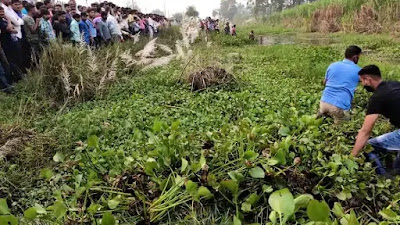An eight-year-old girl has died in a Crocodile attack in Haridwar District of Uttarakhand State India on Friday 25 October 2020. The girl identified as Radhika, from the village of Kudi Baghwanpur, had gone with her sister to collect flowers, when she was snatched by the Animal, which emerged from an overgrown waterway. and dragged her in. A search by divers and local police recovered the girls body, which had visible Crocodile bires on one arm, but were unable to find the Crocodile itself.
There are three species of Crocodilians found in India, the Saltwater Crocodile, Crocodylus porosus, the Mugger Crocodile, Crocodylus palustris, and the Gharial, Gavialis gangeticus. Of these the Gharail is unlikely to be found in a waterway of this type, and is generally a Fish-eater, not prone to attacking Humans. Muggers are smaller that Saltwater and Nile Crocodiles, with males reaching about 3.5 m and females about 2.5 m, and are generally less considered less dangerous, as their preferred prey is animals smaller than Humans. This can, however, sometimes include children, who are at risk.
Mugger Crocodiles were formerly found across South Asia from Iran to Myanmar and Nepal to Sri Lanka, but they are thought to be extinct in Myanmar, Bhutan, and Bangladesh, and the species is considered to be Vulnerable under the terms of the International Union for the Conservation of Nature’s Red List of Threatened Species. Attacks such as the one in Haridwar District this week can lead to reciprocal actions by local villagers, with regular reports of Crocodiles being killed (illegally) in the area. This conflict appears to have been driven by rising Human populations in the area, which means that there are more Humans living close to the Crocodiles, and that there is more water being taken from the river for domestic and industrial use, reducing the available habitat for Crocodiles and their main food source (Fish).
See also...



Follow Sciency Thoughts on Facebook.
Follow Sciency Thoughts on Twitter.





